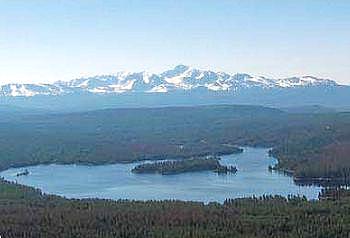Taseko report misled Ottawa over potential quake impact
Tuesday, July 17, 2012
VANCOUVER SUN

Mining firm omitted other crucial information, federal agency finds
Taseko Mines Ltd. made a "misleading" statement in a submission last month to the federal government about the potential of an earthquake-related environmental accident at its proposed $1.5-billion gold-copper mine in the B.C. Interior.
The company also failed to provide adequate information relating to the project's effect on the local environment and aboriginal rights, according to some of the more than 200 other critical comments made by the Canadian Environmental Assessment Agency in its July 6 letter to the Vancouver-based junior mining company.
The CEAA was responding to a draft Environmental Impact Statement (EIS) submitted to federal authorities in early June.
Taseko is making a renewed bid for approval to tap the riches of one of the world's largest undeveloped gold-copper properties located roughly 125 kilometres southwest of Williams Lake.
The company says the mine has a net value of more than $3 billion, based on current gold and copper prices, and will generate 71,000 jobs over the mine's 20-year life.
That was a compelling enough argument to convince the B.C. government to give the project a conditional thumbs-up in early 2010, with the province agreeing that the economic benefits offset the environmental damage caused by turning Fish Lake into a tailings dump.
But Taseko's plans were shot down in a CEAA report later that year that then federal environment minister Jim Prentice called "scathing."
Among the numerous "information gaps" and questionable statements made in the Taseko's June 6 draft Environmental Impact Statement was the company's assertion that the mine is in a "seismically stable region" of Canada.
"This is a misleading statement," the CEAA said on one of the 45 pages of comments about the company's initial report
While the mine itself would be located in an area with historically low seismic activity, the CEAA noted that it is "immediately adjacent to a very seismically active region."
There have been 207 earthquakes over the past 20 years within 100 kilometres, and 1,900 within 200 kilometres, the document noted.
Taseko's bid to get project approval has been launched amid the Conservative government's aggressive campaign to encourage natural resource investment as an antidote to combat global economic uncertainty.
That effort has included legislation to reduce bureaucratic hurdles, attacks on environmentalists, and even criticism of its own bureaucrats and regulators for being overzealous.
But if the federal government is trying to grease the tracks for companies like Taseko, that message didn't get through to federal officials from six federal departments, who along with the B.C. Environmental Assessment Office had numerous issues with the draft Environmental Impact Statement.
The EIS "did not meet the requirements of the EIS guide-lines," wrote Lisa Walls, director of CEAA's Pacific and Yukon region, in the July 6 letter.
The company document left out "critical aspects" federal fisheries officials need to consider about the impact on fish and fish habitat, according to the letter.
"The reviewers identified sections of the draft EIS where information specified in the EIS guidelines is missing, presented in insufficient detail to enable a determination of the potential environmental effects of the project, and/or presented using methodologies that would also preclude such a determination," Walls wrote.
Brian Battison, Taseko's vice-president of corporate affairs, stressed that its draft document was "not meant to be complete" and that the company's finalized EIS will be able to benefit from the government's feedback.
"There is nothing raised in CEAA's comments that we have not anticipated or that will be difficult to respond to in what will be our final EIS submission," he said in an email.
Taseko, in its written reply last week to the CEAA, said the company's "understanding" was that its draft was only an "administrative step and would not be posted on the public registry."
Environment Minister Peter Kent announced last November that the Vancouver-based company would receive another chance to get approval for the mine that was rejected in 2010 because of the extent of environmental damage, its impact on land subject to local first nation title claims, and its expected impact on fish, fish habitat and the local grizzly bear population.
The company has boasted that its new proposal satisfies concerns voiced about the project's likely impact on the environment and first nations.


